Kunstmuseum, Basel

Death and the Maiden ( The death and lust ), Hans Baldung Grien

Death and woman, Hans Baldung Grien

Nativity, Hans Baldung Grien

Asceticism and lust for life, Frank Buchser
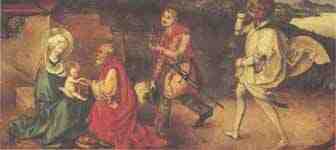 Adoration of the Magi, Albrecht Dürer
Adoration of the Magi, Albrecht Dürer

Reclining Nude and Piano Teacher, Johann Heinrich Füssli (Henry Fuseli )
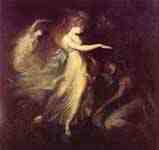
Prince Arthur and the Fairy Queen, Johann Heinrich Füssli (Henry Fuseli )

Undine comes into the fisherman's cottage, Johann Heinrich Füssli (Henry Fuseli )
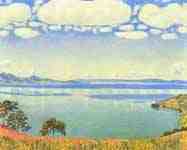
Lake Geneva from Chexbres, Ferdinand Hodler
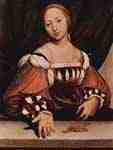
Lais Corinthiaca, Hans Holbein the younger
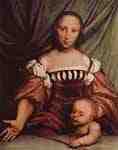
Venus and Cupid, Hans Holbein the younger

Dead Christ, Hans Holbein the younger
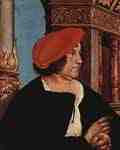
Mayor Jakob Meyer, Hans Holbein the younger
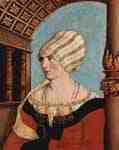
Dorothea Kannengiesser, Hans Holbein the younger

Lessons for adults, Hans Holbein the younger
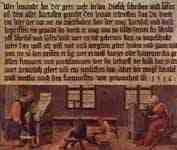
Lessons for Children, Hans Holbein the younger

Caliban, Figurine for Shakespeare's "storm", Franz Marc

Animal Destinies, Franz Marc
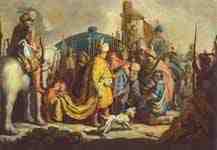
David with Goliath's head before Saul, Rembrandt Harmensz. van Rijn

Mercury Abducting the Goddess Contento, Adriaen van Stalbemt

The wild army, Urs Graf

Tabula Cebetis - The path of virtue, David Kandel

The murderer of Lungenetz, Bartholomäus Käppeler

Melancholy, Crispin Scharfenberg
The Kunstmuseum Basel houses the largest and most significant public art collection in Switzerland, and is listed as a heritage site of national significance.[1] Its lineage extends back to the Amerbach Cabinet, a collection of works by Hans Holbein purchased by the city of Basel in 1661, which made it the first municipally owned museum. Its collection is distinguished by an impressively wide historic span, from the early 15th century up to the immediate present. Its various areas of emphasis give it international standing as one of the most significant museums of its kind. These encompass: paintings and drawings by artists active in the Upper Rhine region between 1400 and 1600, and on the art of the 19th to 21st centuries.
Collection
Pablo Picasso, 1905-06, Les deux frères (The two brothers), oil on canvas, 141.4 x 97.1 cm
Fernand Léger, 1912, Woman in Blue (Femme en Bleu), oil on canvas, 193 x 129.9 cm
The Kunstmuseum possesses the largest collection of works by the Holbein family. Further examples of Renaissance art include important pieces by such masters as Konrad Witz, Hans Baldung (called Grien), Martin Schongauer, Lucas Cranach the Elder and Mathias Grünewald. The main features of the 17th and 18th centuries are the Flemish and Dutch schools (e.g. Peter Paul Rubens, Rembrandt, Jan Brueghel the Elder), German and Dutch still life painting. Key works from the 19th century include the Impressionists represented by Édouard Manet, Claude Monet, Paul Gauguin, Paul Cézanne as well as the paintings by Vincent van Gogh and Switzerland’s Arnold Böcklin and Ferdinand Hodler. In the 20th century, the focus is on works of Cubism with Picasso, Braque and Juan Gris. Expressionism is represented by such figures as Edvard Munch, Franz Marc, Oskar Kokoschka and Emil Nolde. The collection also includes works from Constructivism, Dadaism and Surrealism and American art since 1950. Further highlights are the unique compilations of works from Pablo Picasso, Fernand Léger, Paul Klee, Alberto Giacometti and Marc Chagall.
In the realm of more recent and contemporary art, the collection maintains substantial bodies of work by Swiss, German, Italian, and American artists, including Joseph Beuys, Andy Warhol, Jasper Johns, Georg Baselitz, A.R. Penck, Brice Marden, Bruce Nauman, Jonathan Borofsky, Roni Horn, Francesco Clemente, Mimmo Paladino, Enzo Cucchi, Walter Dahn, Martin Disler, Siegfried Anzinger, Leiko Ikemura, Markus Raetz, Robert Therrien, Rosemarie Trockel and Robert Gober.
Architecture
The Kunstmuseum’s main building dates from 1936. In 2008, the museum acquired land on the other side of Dufourstrasse and held an architectural competition was held. With international stars — Zaha Hadid, Rafael Moneo, Tadao Ando and Jean Nouvel — all pitching, eventually a young local firm, Christ & Gantenbein, won the project.[2]
The final design is an angled building, faced with concrete bricks, and at the same height as the original museum. Building work for the $112 million project began in 2013 due to be finished in April 2016. The project is funded by the Canton of Basel-Stadt and the Laurenz Foundation, set up by Maja Oeri. The extension will add 2,750 square meters of galleries, increasing display space by 43%. The original museum is to house art from the 15th century to 1950, with later work in the extension. The upper floor of the new building will be for temporary exhibitions and the middle floor and part of the ground floor for the permanent collection.[2]
Management
In 2013, the Kunstmuseum had 238,000 visitors.[2]
References
Swiss inventory of cultural property of national and regional significance (1995), p. 53.
Martin Bailey (June 20, 2014), A tale of two extensions The Art Newspaper.
----
Fine Art Prints | Greeting Cards | Phone Cases | Lifestyle | Face Masks | Men's , Women' Apparel | Home Decor | jigsaw puzzles | Notebooks | Tapestries | ...
----
Artist
A - B - C - D - E - F - G - H - I - J - K - L - M -
N - O - P - Q - R - S - T - U - V - W - X - Y - Z
Retrieved from "http://en.wikipedia.org/"
All text is available under the terms of the GNU Free Documentation License


